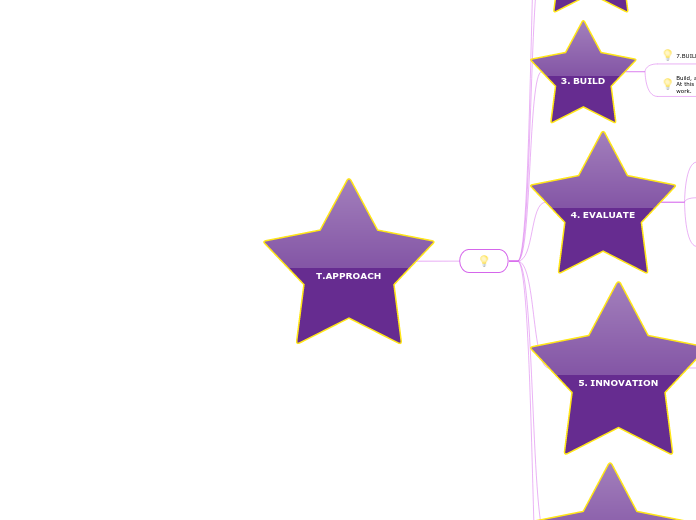T.APPROACH
ANALYSE
1.DETECT THE PROBLEM OR NEED
2.INFORMARTION AND RESEARCH
3.RESEARCH AND POSSIBLE SOLUTIONS
4.CHOOSE THE SOLUTION
We choose the best solution based on the criteria that we set as priorities.
We think of different options that could solve our problem
We collate, study and select information on the different waysthat we could solve the problem
What do we need? What problem do we have or what task have we been set? What conditions are there?
DESIGN
5.DESIGN
6.PREPARE AND PLAN THE WORK
We choose the materials, techniques and tools that we are going to need.
We do drawings (sketches) and diagrams or plans of our choosen solution.We can do this freehand and add more detail later.
BUILD
7.BUILD THE PRODUCT
Build, assemble and finish the parts and assemble the object. At this stage we need to put our theoretical knowledge into work.
EVALUATE
8.CHECK THE RESULTS
Check that the product works and carries out the functions it has to.
9.PRESSENTATION AND ASSESMET
Presentation assessment usually consists of a topic for the student to research, discuss and present. Question and answer session is usually included after the presentation. This measures the ability of students to respond, think under pressure and manage discussion.
10.PUBLIC THE REPORT
Publication and Reporting. Data publication and reporting is the process of preparing and disseminating research findings to the community. Scholarly disciplines can only advance through dissemination and review of research findings at professional meetings and publications in discipline-related journals.
INNOVATION
: a new idea, method, or device : novelty. : the introduction of something new.
INVENTION
the action of inventing something, typically a process or device.
OBSOLENCE
the process of becoming obsolete or outdated and no longer used.
